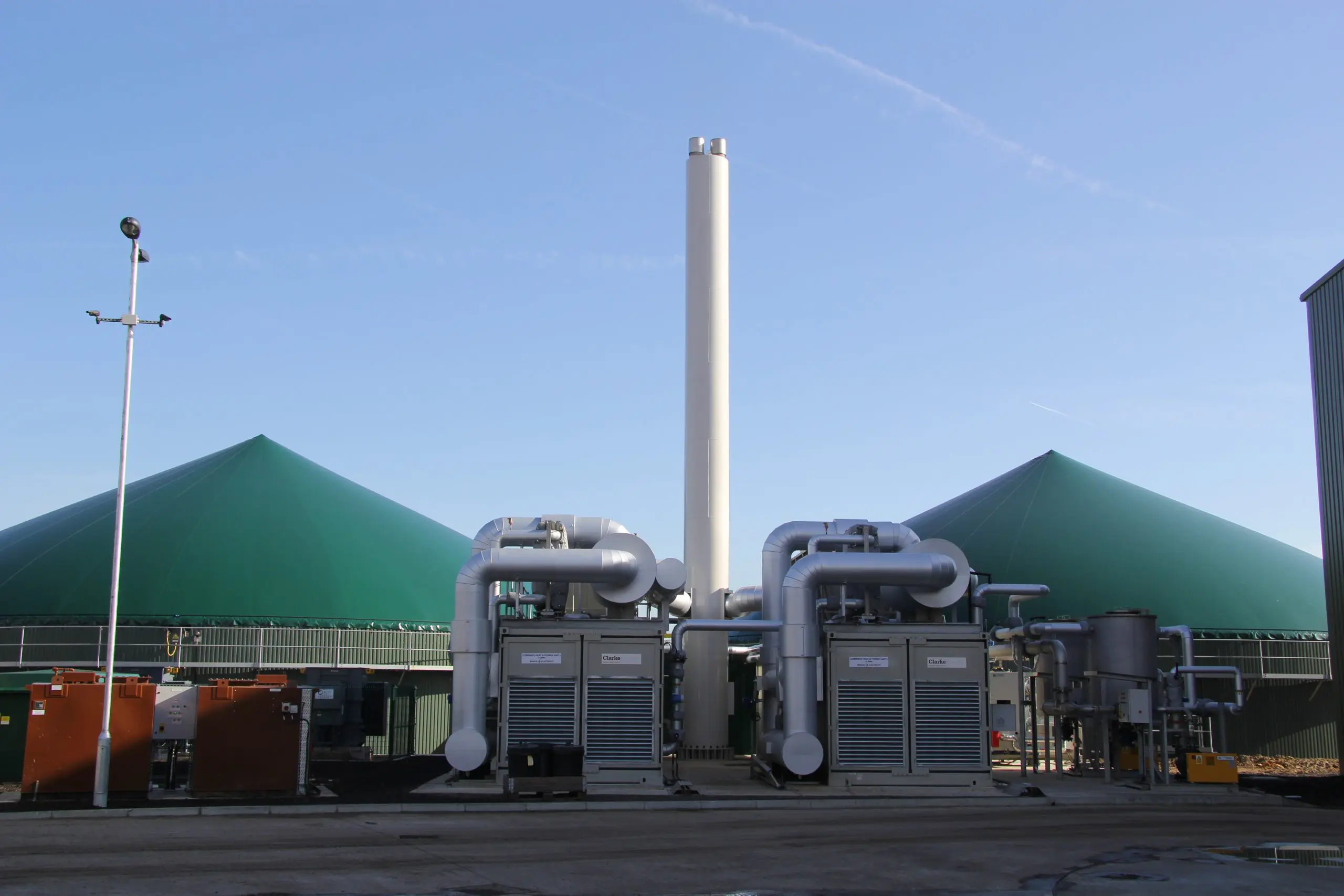Anaerobic Digestion is a safe biological process in which food waste and other organic materials are broken down by micro-organisms in the absence of light and oxygen, to produce renewable energy and a nutrient-rich biofertiliser.

We have partnered with a number of Anaerobic Digestion specialists, all of who provide recycling services for a wide variety of solid and liquid organic and food wastes via a network of industry-leading facilities.
This puts Grundon in a unique position that all of our depots have access to food waste recycling facilities and we have the capacity available to ensure that your food waste can be sent for treatment at Anaerobic Digestion.
How does the Anaerobic Digestion process work?
Anaerobic Digestion is a biological treatment process in which micro-organisms break down organic material, such as food waste, in the absence of oxygen, to create a biogas.
Food waste arrives
Food waste arrives at the Anaerobic Digestion facility, where it is tipped into a bunker before it is de-packaged and macerated.
Digester tanks
The macerated food waste is then placed into large sealed oxygen-free digester tanks.
Biogas creation
During the Anaerobic Digestion process, the food is broken down by micro-organisms, creating a biogas (methane and carbon dioxide) and a rich liquid fertiliser called digestate.
Organic fertiliser
The digestate can then be sent to for spreading on farmland as a valuable organic fertiliser which enriches the soil without the use of petrochemical fertilisers, which are costly to the environment.
Renewables
The biogas is then either cleaned so that it is injected back into the gas network, or it is burnt into order to create renewable electricity for the National Grid.
The Anaerobic Digestion process covers renewable energy from the food waste, reducing and eliminating the need to extract natural gas or import it from abroad, as well as the reliance of using fossil fuels to generate electricity.
One of the most significant benefits of recycling your food waste via Anaerobic Digestion is how cost-effective it is.
Food waste weighs considerably more than other comparative waste streams, such as general waste or dry mixed recycling.
Many establishments have to pay a premium because their general waste bins are too heavy and that is often due to unwanted or surplus food being thrown into those bins.
By segregating food waste from your general waste, it will reduce the weight of those bins and could lead to a substantial reduction in the size and frequency of your general waste collection requirements, therefore saving you money in disposal costs.
By sending this segregated food waste to Anaerobic Digestion treatment facilities, you will be sending less to general waste to landfill where it would be subject to the Landfill Tax, further reducing your disposal costs.
Separated food waste will always increase its value and so in the longer term it will be cheaper and more environmentally-friendly.
There are many environmental benefits of sending food waste for recycling at Anaerobic Digestion facilities.
Unfortunately, at the moment the majority of food waste is still sent to landfill, where it biodegrades and releases harmful greenhouse gases such as carbon dioxide and methane, which contribute to climate change. Due to this, it is widely expected that the Government will soon ban food waste from landfill in the near future.
Anaerobic Digestion considerably reduces these emissions, in addition to producing valuable renewable energy and a nutrient rich fertiliser which reduces the need for petrochemical fertilisers.
By recycling your food waste at Anaerobic Digestion facilities you can reduce the amount of food sent to landfill and reduce both your disposal costs and your carbon footprint.
